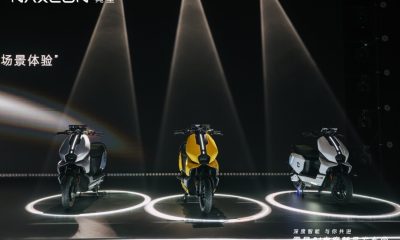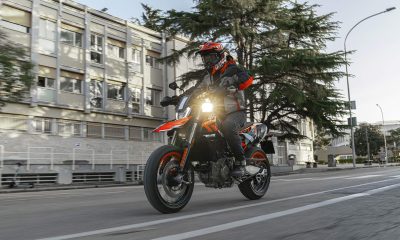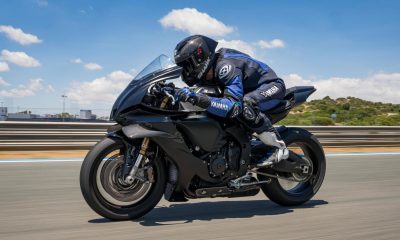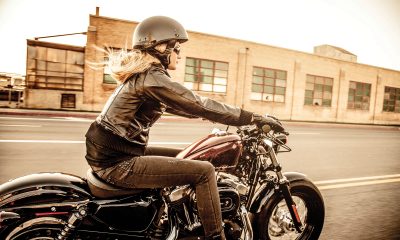On this week’s episode of iM Cubaholic, we take a look at Honda’s Little Cub, the 14 inch Little Super Cub!

In case you missed last week’s episode, motorbike’s weekly iM Cubaholic series covers everything about the iconic Honda Cubs. The Cub is one of the most important bikes in both the motorcycle and Honda’s history. Honda changed the way people look at riding motorcycles with the introduction of the Super cub and the ad campaign “You meet the nicest people on a Honda” back in the 1950s. Since then, Honda has sold over 100 million Cubs with a large Cub lineup/variants where some models are barely known. In this series, we cover everything from both known and unknown Cub models to their; history, specs, features and many more. Are you a Cub addict? well, this is something you wouldn’t want to miss!
In the mid-90s, Japan’s motor industry went through a “retro” boom. When it came down to Honda, the Super Cub had always been popular for its nostalgic styling but with the retro boom, Super Cub reentered the spotlight as a trendy fashion item which made it more popular among youngsters. And that’s when the Honda Little Cub came into the picture.
Honda Little Cub
- Later Model: Source: Bikebros
In 1997, Honda stepped up the game by introducing a Honda Super Cub sub-variant called the “Little Cub”. The Little Cub retained the basic structure of the Super Cub’s design, frame and powerplant, however, it was fitted with a set of smaller 14-inch wheels.

What was Honda aiming for? Well, just like the Giorno Cub, Honda wanted to introduce a Super Cub model that’s easy to ride with anyone behind the wheel regardless of their size. Aside from this Honda wanted something trendy, in this case, “cute”.

The addition of the smaller 14-inch wheels reduced the seat height by 30mm compared to the standard Super Cub with its 17-inch wheels. With the forward-leaning engine sitting lower in the backbone frame, the Cub had the same ride-feel as scooters. The low seat height and lower positioned engine meant it was easier for women to ride even in their skirts.

Additionally, the 14-inch wheels improved manoeuvrability. As the Little Cub was made for city use, the smaller size wheels made it easier to handle small turns, making U-turns and parking in urban areas.
Besides the 14-inch wheels, the Little Cub inherited standard Honda Super C50’s classic styling and mechanical features. Everything from the handlebar, to the emblem-shaped speedometer, pressed steel chain cover and all the other body panels were carried forwarded from the Honda Super Cub C50. On the mechanical side, braking and suspension (bottom-link front suspension) components were borrowed from the C50 too.
Evolution of the Honda Little Cub
The Honda Little Cub went on sale from 1997 until 2017. As it was based on the Honda Super Cub C50, every time the C50 got an update, Honda refreshed Little Cub’s design and powertrain to keep it up to date.
- Earlier Model | Source: Sevensaesmotors
- Later Model: Source: Bikebros
Speaking of the updates, one of the most notable change that the Little Cub received throughout its production run is the powerplant. As the Honda Super Cub C50 evolved, Honda constantly updated the engine of the Little Cub too.
The earlier generation Little Cub featured a carburetted 49cc, air-cooled 4-stroke OHC single-cylinder engine. Mated to a 4-speed gearbox, the Little Cub was capable of making 4- 4.5 hp @ 7,000 rpm and a peak torque of 4.7 – 5.1 Nm @ 4,5000 rpm depending on the year it was made.

In 2007, Honda replaced the carburetted engine with a modern 49cc PGM-FI engine.
Mated to a 4-speed gearbox, the later Fi models put out about 3.35 hp @ 7000 rpm and 3.8 Nm @ 5,000 rpm before going out of production in 2017.

With the Little Cub, Honda offered the “Cubra” accessory kit which was also offered for the standard Honda Super Cub range. In case you missed our coverage on the Cubra accessory kit, check it out here: iM Cubaholic Ep.8: Cubra – The Official Accessory Kit for Honda Super Cub
- Later Model: Source: Bikebros
Source: Bikebros










































Facebook
Instagram
X (Twitter)
YouTube
LinkedIn
RSS